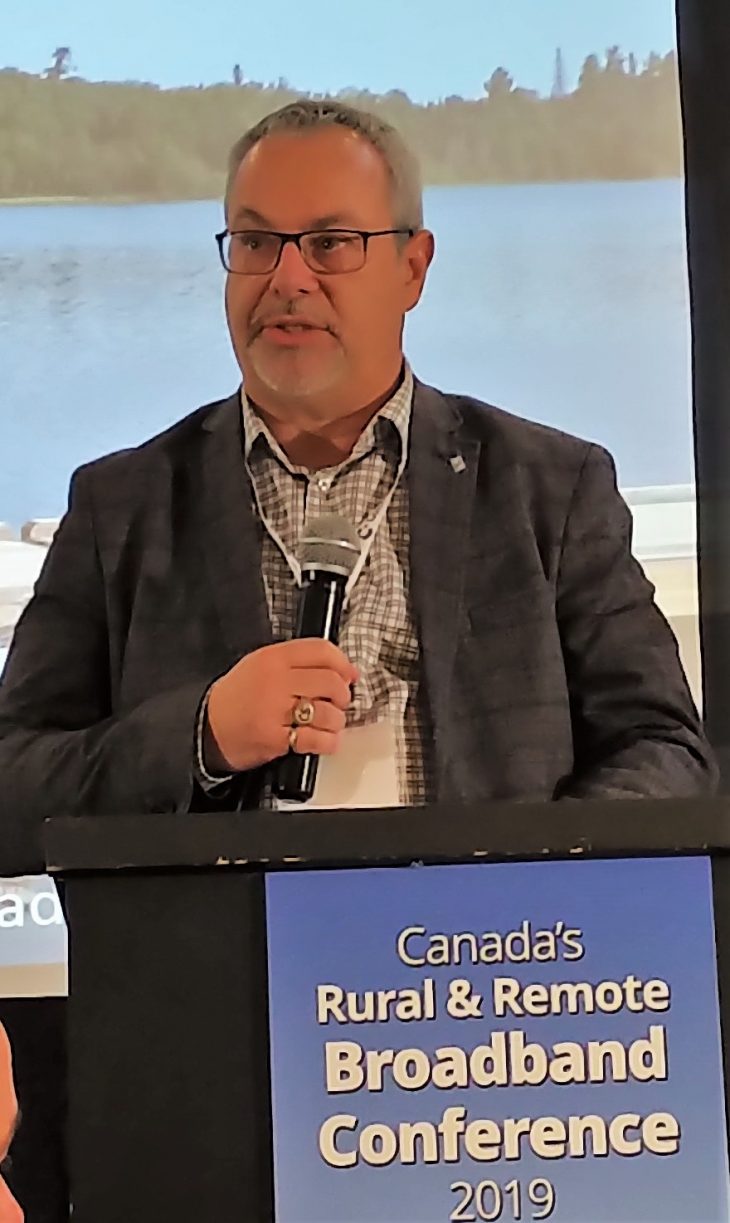
CRTC Broadband Fund calls for more applications
GATINEAU — The CRTC today issued its second call for applications to the Broadband Fund, widening the eligibility of projects to include those that promise to improve broadband access in geographic areas that do not currently have access to universal service objective-level broadband services, including areas that were eligible in the first call for applications.
The CRTC’s universal service objective for fixed Internet access service is that all Canadians have access to at least 50 megabits per second (Mbps) download and 10 Mbps upload, with an option of unlimited data. For mobile wireless services, the CRTC’s universal service objective is that all Canadians have access to the latest generally deployed mobile wireless technology (currently LTE), which should be accessible in homes, businesses and along major roads.
During his speech to the Bridging the Digital Divide rural broadband conference in North Bay on Wednesday where he announced the new call for applications, CRTC executive director of telecom, Chris Seidl (pictured) said broadband expansion to rural regions "can't come fast enough" for many Canadians living remotely. "According to the latest data, at the end of 2018, 85.7% of households have access to 50/10 Mbps Internet access with unlimited data. That’s up from 84.1% in 2017. In addition, 87.2% of major roads have LTE coverage across Canada," he said.
"But break those numbers down into the urban-rural divide and they tell a story you know too well. By the end of 2018, nearly all urban households had access to the Internet at the new speed targets and with unlimited data. However, just 40.8% of rural residents have access to such a service.
As well, each region has its own differences. "For example, in B.C. and Quebec, more than 90% of residents have access to broadband services that meet the universal service objective, while those living in some Atlantic and Prairie provinces are in the 55% to 60% range. Access levels are even lower in most Indigenous communities across the country," said Seidl.
"The worst off, and most in need, are people living and working in the far North. In the three Northern territories, no households have access to a broadband Internet service that meets the CRTC’s universal service objective. And only one-third of major roads are covered by LTE mobile wireless service. "
In its first call for applications to the Broadband Fund, the CRTC accepted applications for projects in the Yukon, Northwest Territories and Nunavut for satellite-dependent communities. In its second call for applications, the CRTC said: “[T]he Commission recognized that there are many geographic areas throughout Canada that do not currently have access to universal service objective-level broadband services and that would not be eligible for funding in the first call for applications.”
The CRTC has published updated maps outlining the eligible geographic areas for the second phase of its call for applications. In eligible geographic areas, projects to build or upgrade fixed access infrastructure, transport infrastructure, mobile wireless infrastructure or any combination of these, will be eligible, the announcement said.
The Commission outlined specific criteria for eligible projects in eligible geographic areas as follows:
- To be eligible for funding for a fixed broadband Internet access service project, an applicant must propose to build or upgrade infrastructure in an eligible geographic area, defined as a 25 km2 hexagon in which Statistics Canada’s latest census data show that there is at least one household but in which no household has access to broadband Internet access service at universal service objective-level download and upload speeds (50 Mbps and 10 Mbps, respectively).
- To be eligible for funding for a transport project, an applicant must propose to build or upgrade infrastructure to an eligible community, defined as a small population centre with a population of fewer than 30,000 residents, that is located at least 2 km from a point of presence (PoP) with a minimum capacity of 1 gigabit per second (Gbps).
- To be eligible for funding for a mobile wireless service project, an applicant must propose to build or upgrade infrastructure in an eligible geographic area, defined as either
- a 25 km2 hexagon in which Statistics Canada’s latest census data show that there is at least one household but in which no household has access to coverage by the latest generally deployed mobile wireless technology (currently LTE), or
- part of a major transportation road that does not have access to coverage by the latest generally deployed mobile wireless technology (currently LTE).
The full details about the criteria for eligible projects, including an Application Guide, can be found here. Applications must be submitted by March 27, 2020.


